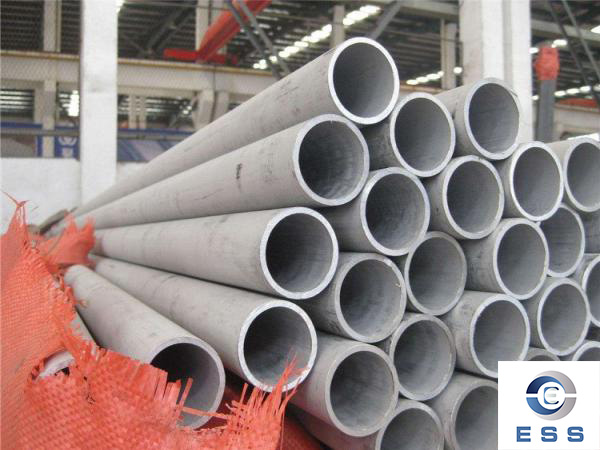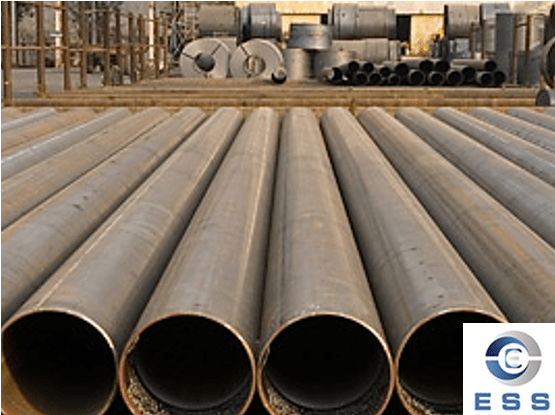
What are heat exchange tubes?
The heat exchange tube is one of the components of the heat exchanger. It is placed inside the cylinder and is used to exchange heat between two media. It has high thermal conductivity and good isothermal properties. It is a device that can quickly transfer heat energy from one point to another with almost no heat loss. Therefore, it is called a heat transfer superconductor. Its thermal conductivity is thousands of times that of copper. Stainless steel pipes are generally used, including welded pipes and seamless pipes.
The manufacturing process of heat exchange tubes
1. Material selection
The manufacturing of heat exchange tubes requires the selection of appropriate materials. The main materials are metals, and commonly used ones are copper, steel, stainless steel, etc. The materials generally selected are stainless steel, copper, aluminum, etc. The selection of materials needs to consider factors such as the properties of the medium used in the heat exchange tube and the use environment to ensure the quality and service life of the heat exchange tube. Before manufacturing the heat exchange tube, it is necessary to purchase high-quality metal materials and perform necessary heat treatment before operation.
2. Processing and manufacturing
(1) Cutting of tube sheets
As a common heat transfer equipment, heat exchange tubes are composed of tubes, tube sheets and shells. Among them, the tube sheet is the key component for connecting the tubes. In the manufacturing process, the first step is to cut the steel plate into the required tube sheet size. The main cutting methods include flame cutting, plasma cutting, laser cutting, CNC cutting, etc. The selection of different cutting methods should be based on the required workpiece quality, materials and requirements.
(2) Turning
After the tube sheet is cut, turning is required to process the circular tube hole. Turning can be performed by CNC lathe or ordinary lathe. During the turning process, it is necessary to control the processing depth and processing speed to avoid problems such as hole defects and surface roughness.
(3) Tube cutting
It is necessary to select the appropriate size of tube, and then cut it into a specified length of tube. When cutting, it is necessary to ensure that the cut is smooth and no defects such as burrs and cracks should appear.
(4) Forming
Forming is one of the key steps in the manufacture of heat exchange tubes. It is mainly divided into two methods: cold drawing and hot drawing. Among them, cold drawing is suitable for manufacturing heat exchange tubes with smaller diameters, while hot drawing is suitable for manufacturing heat exchange tubes with larger diameters. The tube section is placed in a forming device and bent or shaped into the required shape. During forming, it is necessary to pay attention to the tube wall not having defects such as wrinkles and shrinkage. The forming process needs to strictly control parameters such as temperature and stretching speed to ensure that the physical and mechanical properties of the heat exchange tube meet the design requirements.
(5) Welding
After turning, the tube and tube sheet need to be connected. The main welding methods include manual welding, submerged arc automatic welding, TIG welding, etc. The selection of different methods should be based on the material, wall thickness and aperture requirements of the tube and tube sheet. During the welding process, it is necessary to master the welding temperature, welding speed and welding position to ensure the welding quality.
(6) Pickling
After welding, the tube sheet needs to be pickled. Pickling is the process of immersing the tube sheet in an acid solution for cleaning. Pickling can remove impurities such as iron oxide scale and smoke on the surface of the tube sheet. The surface of the cleaned tube sheet is smoother, which is conducive to subsequent processing.
(7) Pipe winding
After pickling, the tube needs to be wound around the tube sheet. The main methods of pipe winding include manual pipe winding, welding pipe winding, mechanical pipe winding and other methods. During the pipe winding process, the bending radius, offset and verticality of the pipe need to be controlled to ensure that there is no contact or deformation between the pipes.
(8) Reflow
After the pipe winding is completed, reflow treatment is required. Reflow is to fix the pipe and the tube sheet in a high-temperature furnace to achieve a certain strength and density. During the reflow process, it is necessary to control the reflow time and temperature to avoid deformation or other problems caused by excessive temperature of the tube sheet and the pipe.
3. Surface treatment
The finished heat exchange tube needs to be surface treated to ensure its rust prevention and corrosion resistance, as well as its beautiful appearance. Surface treatment methods include mechanical polishing, chemical treatment, shot blasting, pickling, electroplating and other methods.
4. Quality inspection
After the heat exchange tube is manufactured, quality inspection is required to ensure its safety and efficiency. Inspection methods include pressure test, leakage test, leakage detection and other methods. The appropriate inspection method needs to be selected according to the specific situation.
5. Assembly
After the molding and surface treatment are completed, the heat exchange tube needs to be assembled with other components. Assembly is the last link in the manufacture of heat exchangers, including welding, riveting, clamping and other methods. During the assembly process, strict quality control must be carried out on each link to ensure the performance and reliability of the entire heat exchanger.
Conclusion
The above is a detailed introduction to the manufacturing process of heat exchange tubes, including material selection, processing and manufacturing, surface treatment, quality inspection and assembly. When manufacturing heat exchange tubes, it is necessary to strictly follow the prescribed process to ensure the quality and service life of the heat exchange tubes. The manufacturing process of heat exchange tubes is a complex and delicate process. It is necessary to strictly master the parameters and requirements of each process and reasonably use modern manufacturing processes and equipment to improve manufacturing efficiency and manufacturing quality.













 Eastern Steel Manufacturing Co.,Ltd not only improve product production and sales services, but also provide additional value-added services. As long as you need, we can complete your specific needs together.
Eastern Steel Manufacturing Co.,Ltd not only improve product production and sales services, but also provide additional value-added services. As long as you need, we can complete your specific needs together.










